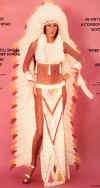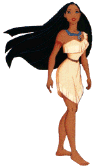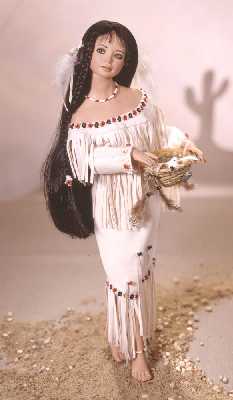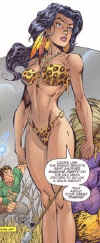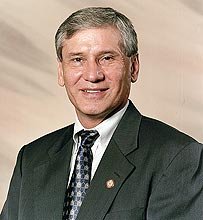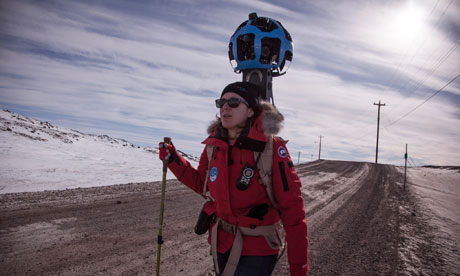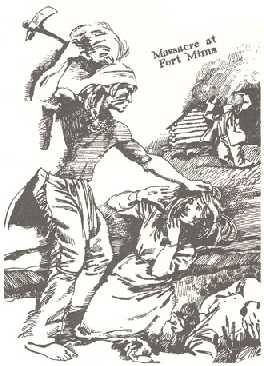'Native Entertainment' Magazine Courts Controversy in Indian Country
By Adrian JawortFlipping through the pages of Native Entertainment magazine, you'll find a lot of risqué content that is absent, for the most part, from other Native-oriented magazines.
Since its premiere issue came out in February of 2009, the contemporary entertainment, music, and art magazine has cast a wide net, presenting articles and profiles on actors, rappers, and heavy metal bands, as well as less-expected material such as political pieces. One constant in every issue, however, is the photos of tattoos and sexy Native women."
It’s kind of a weird road we’re on, because we’re paving a new path," says Tito Gutierrez, Navajo, the magazine’s creator and editor who runs it out of his 2,000 square foot building in Albuquerque, New Mexico. "When we came out, we were the only magazine of our caliber."
"Everything before us was either scholastic-based or if there was a quote-Indian-unquote [focus], they had to jab a feather in there somewhere, or they were wearing some kind of turquoise, or something that said, 'Hey, I'm an Indian! Look at me!'"
Gutierrez rejects the notion that all Natives represented in media have to fit into an assumed, sometimes even exploited mold of what Natives should strive to look and act like. "We don’t want to culturally exploit anything," he says. "You’ll never find feathers or Indian religion; you’ll never find buckskin; you’ll never find pottery or turquoise."
As a result of paving a new path, Gutierrez has faced his strongest critics from within the Native community, who continually claim he’s exploiting Native women and "acting white" for having pictures of scantily clad women or an annual Sexiest Native Woman contest.
Gutierrez faults such critics as having racist double standards, saying those same people have no problem if African Americans or white people have similar magazines, or TV networks like BET or MTV, doing the same thing he’s doing. Critics of Native Entertainment, Gutierrez says, "have made a decision to say it’s OK when other races do it and they have no problem with it. But when a Native decides to do it, it’s somehow wrong?"
Gutierrez says Natives are real people who live in a real modern world, and they do rap or rock out and have a plethora of emotions and desires aside from the stoic caricatures that date to Hollywood westerns and the imagery of Edward S. Curtis. "We were the first to showcase all these crazy and supposedly 'forbidden' elements of who we are as a people," Gutierrez says.
The way Gutierrez sees it, whenever Natives try to do something that is "daring and bold," the loudest naysayers are always other Natives who feel they can dictate what Indians should or shouldn’t strive to be. For Gutierrez, it creates a self-enforcing stereotype. "That goes to what I call the 'Pocahontas syndrome,'" he says. "People are taught by Hollywood what to believe about who we are supposed to be and how we’re supposed to be."
Gutierrez says he has had no difficulty finding Native models who will show off their sex appeal--on the contrary, many tell him they are tired of the typical Native-themed photo shoots they are expected to do, whether it's wearing traditional attire or posing in front of a mesa. "We’re the go-to company for girls who want go beyond that," he says. "They’re excited to do something beyond what has already been done."
"Native women are just as intelligent and sexy as any other race, and so are the men," Gutierrez adds. But he says that he has noticed a trend of hypocrisy along gender lines: His "Sexiest Native Women" contests and issues have drawn fierce criticism online, but he says those same critics were happy to buy several copies of a "Sexiest Native Man" issue when it came out.Natives respond
Some responses to this
posting on Indian Country Today's Facebook page:
I think it's a good move to pull away from stereotypes of Native mags, but then I do think that adding the scantily clad women to the pages is exploitation of another kind just to make money.
I don't like that they have to take their clothes off to get attention, either.
Just irks me, but it is a country of freedom of expression. Don't know what's worse exploiting our culture for money or making Native women another Pocahontas sex symbol. Just annoying. Good thing I don't have to support his cause or magazine. Won't be purchasing one no time soon.
Now Native women have become subjects of "objectification." Low blow to our women and culture.
Of course it creates a controversy, it's a whole new generation of not being taught by my grandparents about the facts and morals being taught by the elders. That generation was gone two generations ago!Rob replies
Several major problems with Gutierrez's arguments:
1) "We don’t want to culturally exploit anything," he says. So instead he exploits women's bodies? Nice.
I wouldn't say using things like pottery or turquoise is exploiting them. But one way or another, Gutierrez is exploiting Natives.
2) Racist double standards? Feminists have been protesting magazines featuring scantily clad non-Native women for decades. It's no double standard to say this magazine is as unacceptable as those magazines for similar reasons.
3) Indians "have a plethora of emotions and desires aside from the stoic caricatures that date to Hollywood westerns and the imagery of Edward S. Curtis"? No kidding.
What this ignores is that the "sexy Indian princess" stereotype dates to the time of Malinche and Pocahontas. It's been around since the beginning. Replacing a 100-year-old stereotype with a 500-year-old stereotype is no improvement.
4) Whenever Natives try to do something that is "daring and bold"? That's a laugh. Again, exploiting the sexuality of Native women is one of the oldest ideas in American history. Putting Native women in demure buckskins--or better yet, the demure dresses they actually wore--would be far more daring and bold. Let's see you make money
without exploiting Native women, brave boy.
"Pocahontas syndrome"?
5) Gutierrez criticizes the "Pocahontas syndrome," which I guess he defines as dictating what Natives should or shouldn't be. Why, because Pocahontas was known for being dictated to and fitted into a certain mold?
That's a total misunderstanding of her role in America's mythology. Actually, she's known for being the "good girl" Indian who saved John Smith. That quickly evolved into a romantic partner for Smith, and then an alluring young Native woman. In short, it's all about her Madonna/whore sexuality.
So Gutierrez is contradicting his "Pocahontas syndrome"...by having women dress up like sexy temptresses like our mythical version of Pocahontas? And that's daring because they're wearing modern clothes rather than buckskins? That's like a movie producer's saying, "We put our Arab terrorist in a suit rather than a robe and turban. Therefore, his portrayal is daring and bold, not a slight update on an extremely overused stereotype."
6) Gutierrez is literally tracking his buyers so closely that he knows when critics of the "Sexiest Native Woman " issue buy the "Sexiest Native Man" issue? Somehow I doubt it.
In short, I'm not impressed. Basically, Gutierrez is offering the same old excuse offered by every exploiter of women. "Our semi-naked women are empowering themselves. They're finally free to be everything they want to be.
"If they want to be sex objects rather than brain surgeons or rocket scientists, so be it. We're helping them achieve their goals."
For more on edgy Native magazines, see
Urban Magazine Attracts Native Youth and
Redskin = "Appalling, Offensive, and Disgusting."
This:

is a trend that began with this:

And continued through the centuries with things like this:
